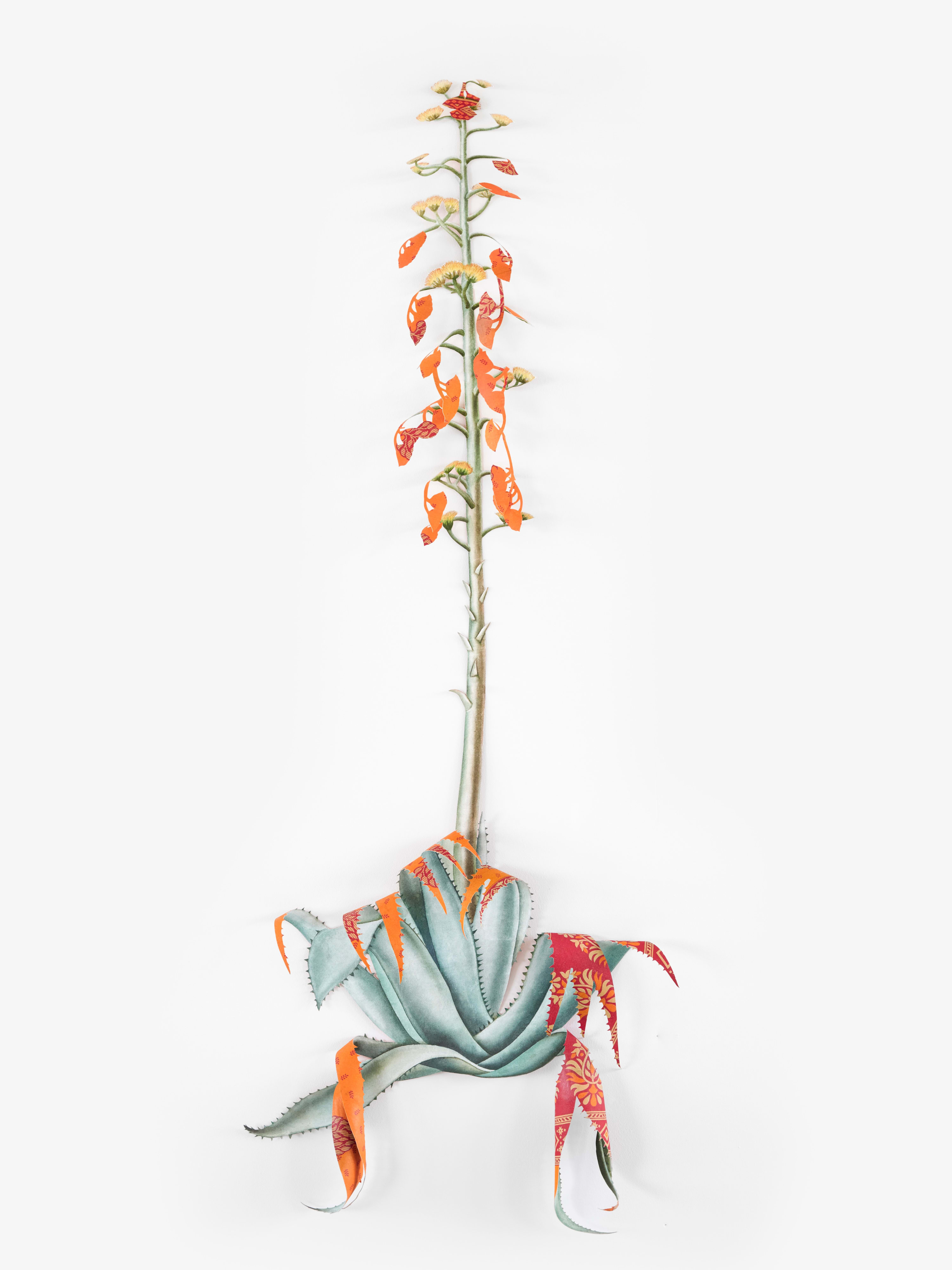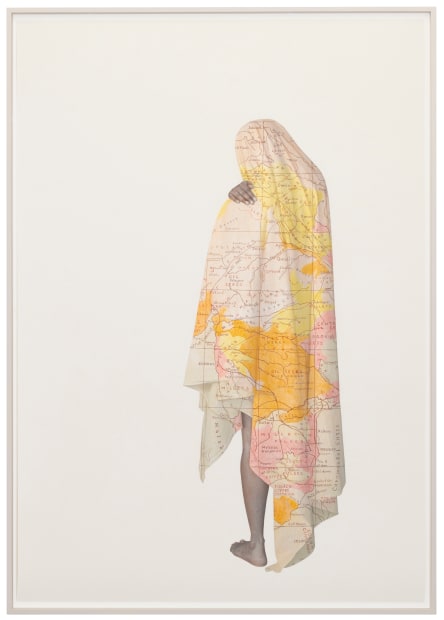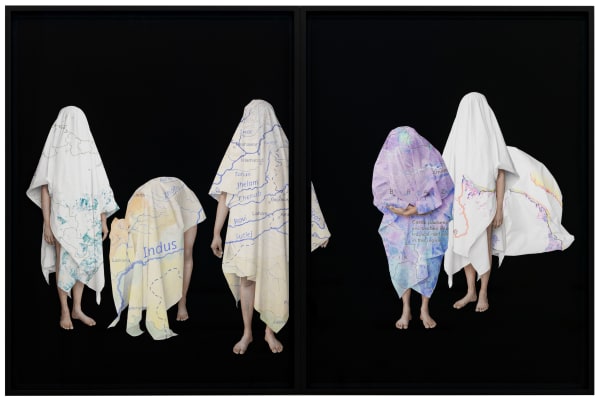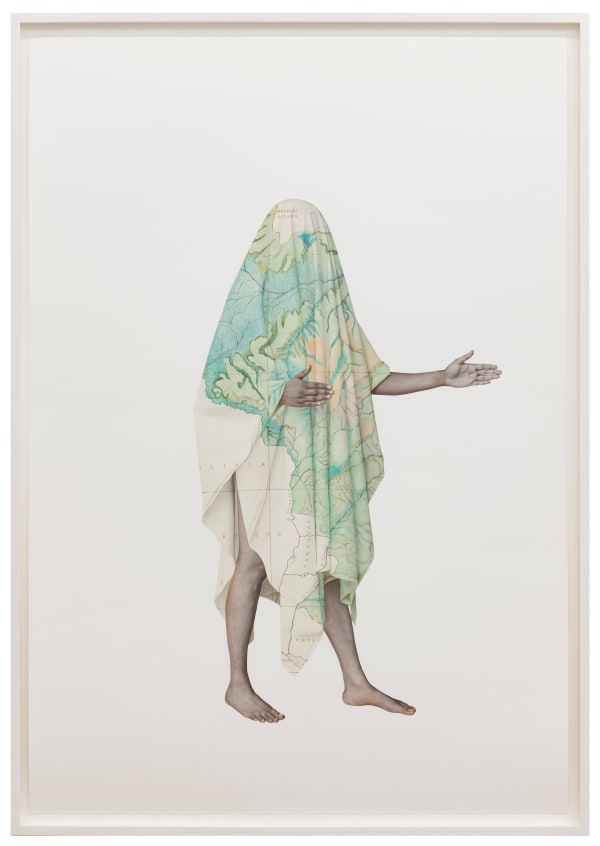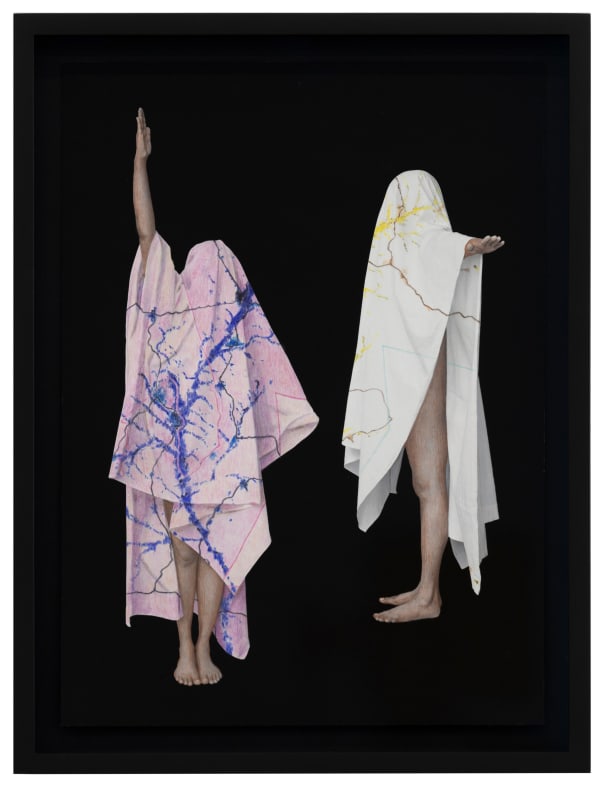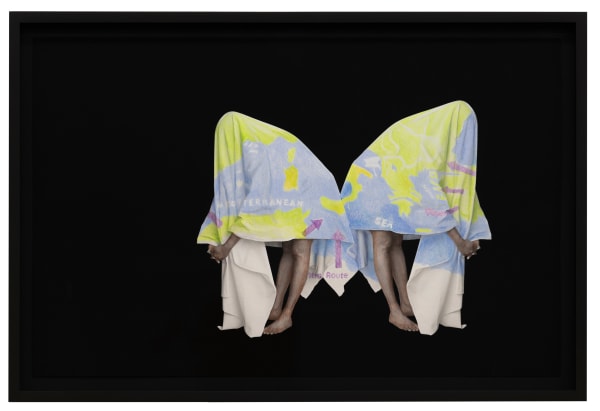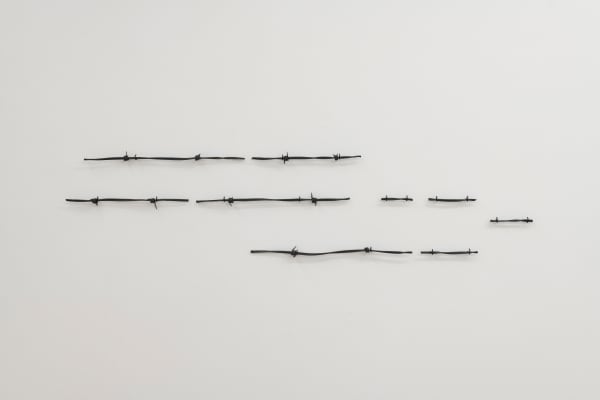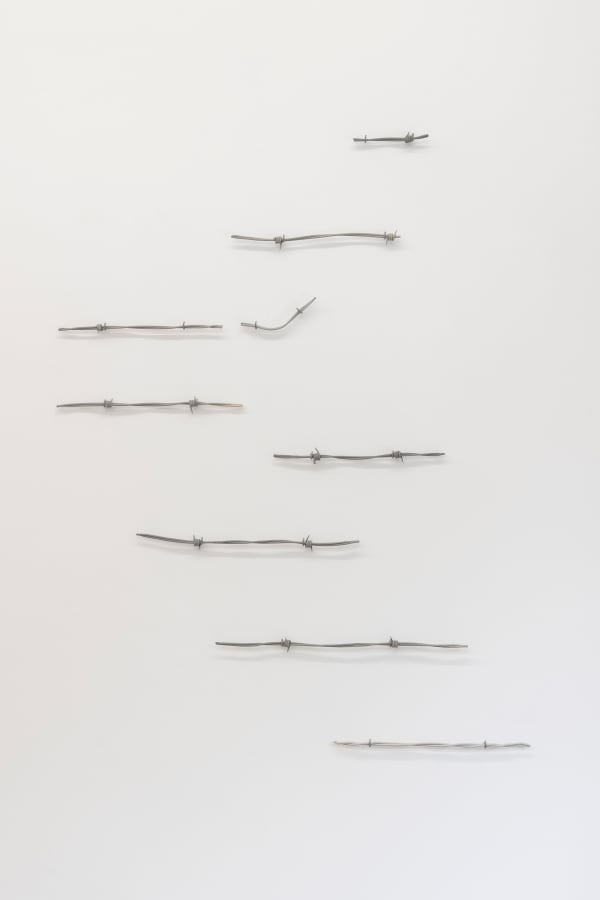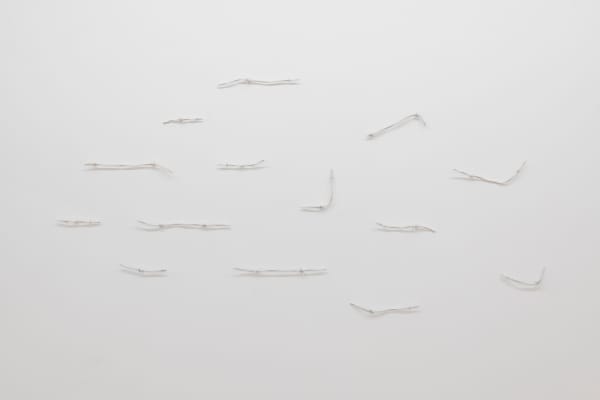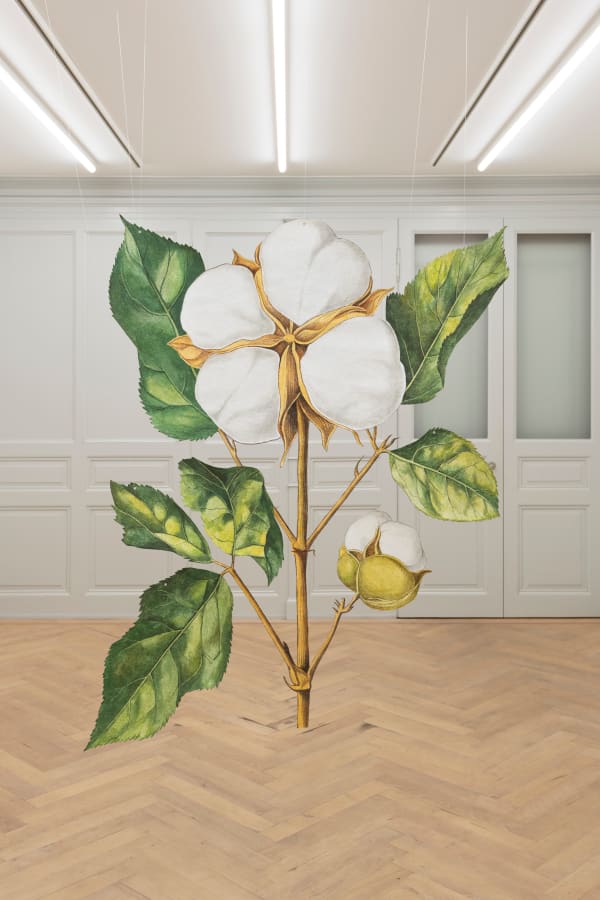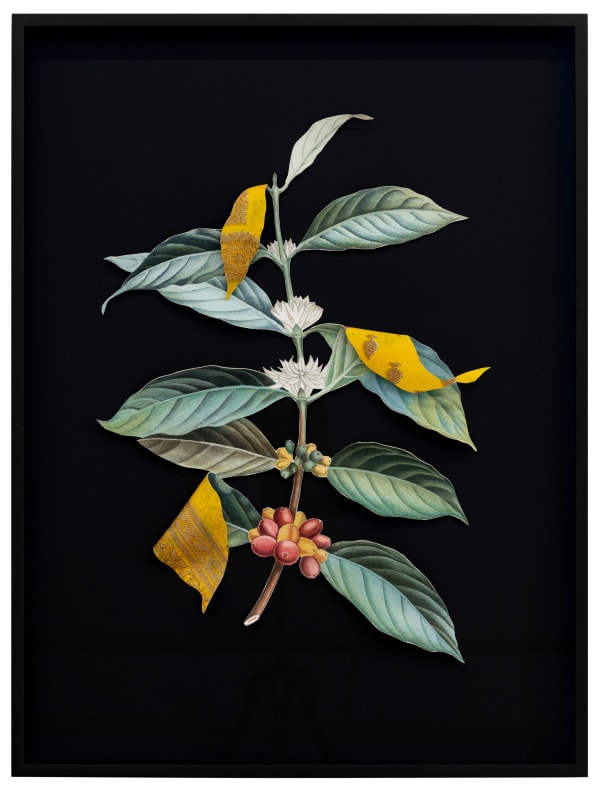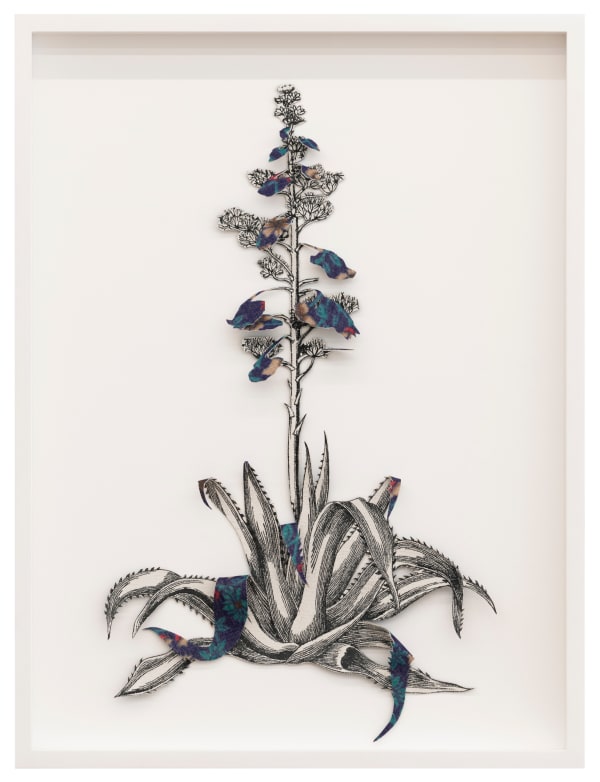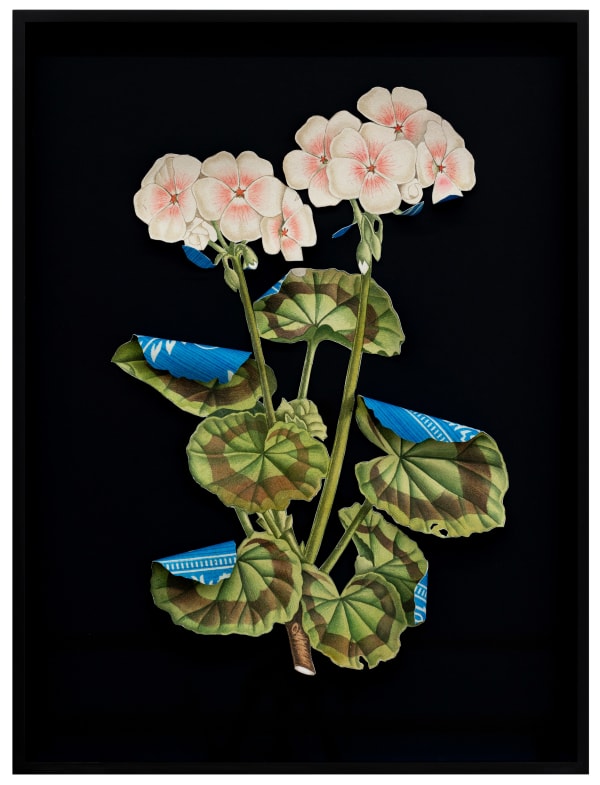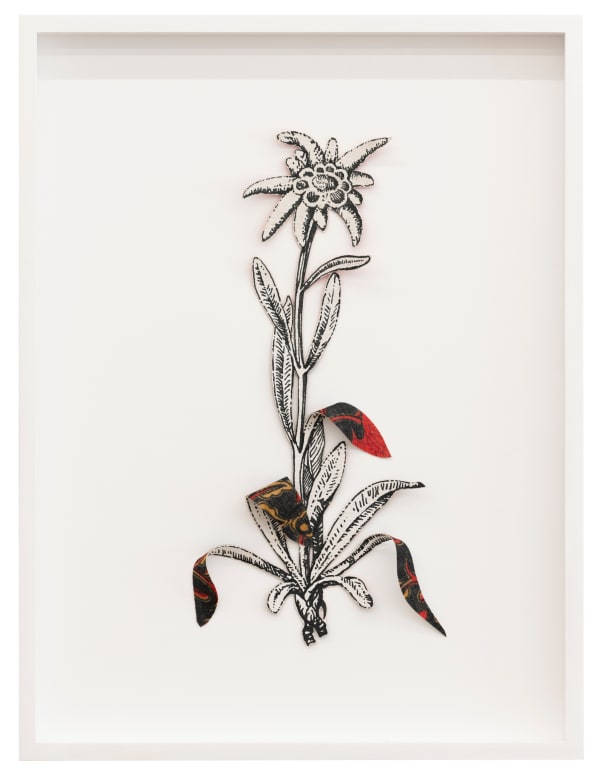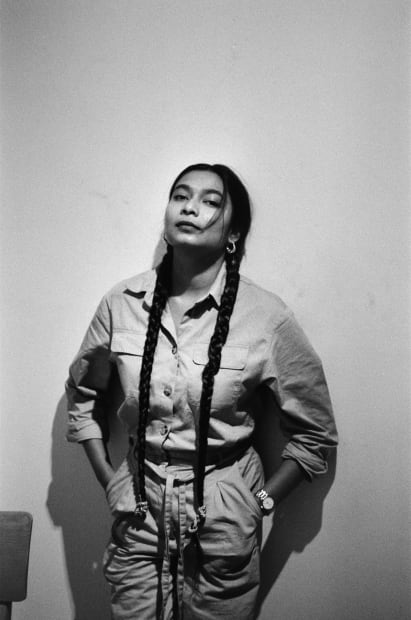-
Galerie Peter Kilchmann presents I Recall The Forest Inside Me, the first solo exhibition of Manor Art Prize 2024 winner Ishita Chakraborty. The show reflects on the artist’s personal connection to landscapes, migration, and memory, inspired by her upbringing in India and her recent residency in the Brazilian Amazon. Through works ranging from wall paintings, drawings on sari fabric, glass sculptures, and porcelain objects, Chakraborty explores land as both a place of beauty and vitality and a site of exploitation, displacement, and colonial history.
-
-
Growing up on the riverbank of the Ganges and at the foothills of the Himalayas in India—a piece of forest I always carried inside me! In my artistic practice, I always question what makes something native or alien? So, in my diary, from my residency in the Brazilian Amazon Rainforest last year, I weave these echoes, "I Recall The Forest Inside Me".– Ishita ChakrabortyAt the center of this solo presentation lies an engagement with land and landscape—envisioned simultaneously as a realm of contemplation, beauty, peace, spaciousness, growth, and vitality, and as a site of exploitation of natural resources, of man-made borders, migration, and border violence. The new and newly installed works—ranging from drawings on canvas cutout glued on Indian sari fabric to a wall painting, works on paper, a glass sculpture, and porcelain objects—unfold these dualities within the spaces in Rämistrasse.
-
On the ground floor, a wall painting of tropical rainforests, painted in dark gray chalk, unfurls along the wall like the tendrils of a wild, untamable vine. This mural is complemented by vividly colored paintings on canvas, affixed to sari fabric, cut along their contours to depict plants that have been brought from the Global South during colonial occupation. For this work, the artist drew inspiration from rainforest wallpapers, archival materials on plantations, botanical illustrations on saris, and photographs taken during her residency in the Amazon region. One example is a blooming agave (Agave, 213 × 91 cm), painted in lush green. Some of its blossoms and foliage bend downward, revealing their reverse—their 'spine': an ethnic ‘Chapa’ print sari in orange and red floral patterns. Such saris are inexpensive cotton fabrics with vibrant colors and floral motifs, most worn by women in rural or domestic settings. Since last year, the artist has been developing this technique in a series of plant and fruit representations, including cacao, coffee plant, maize, sugarcane, tobacco, banana, geranium, rubber tree, and edelweiss. Many of these plants bear entangled histories: they contributed both to the enrichment of colonial economies and to the aesthetic appropriation of tropical flora in the global North.
-
 Ishita ChakrabortyI Recall The Forest Inside Me I, 2025
Ishita ChakrabortyI Recall The Forest Inside Me I, 2025 -
Following the wall painting along the staircase, the audience ascends to the upper floor. The first room is dedicated to further works from the aforementioned series showing the artist cloaked in maps that for example document illegal soya cultivation and gold mining in the Amazon rainforest alongside maps of disputed border regions and historical topographies of plantation landscapes. Maps can be read as colonial instruments, historically serving to consolidate power structures—claiming territories, delineating borders, and establishing regimes of control, often at the expense of Indigenous populations and their systems of knowledge.
-
The gallery space on the left houses Between the Land and Sea I (110 × 200 × 60 cm), a barrier crafted entirely from glass, in which light both reflects and refracts. On the walls, a new version of Resistance II is displayed: barbed-wire forms made from unglazed porcelain, individually hand-shaped by the artist and arranged on the wall like a secret script. Both works, created from fragile materials, point to the vulnerability of our systems and raise questions about the structures of power and mechanisms of control that continuously surround us.
-
The exhibition space on the right features various botanical illustrations in the same technique used in Agave. They are attached to the wall like a herbarium collection, showing how plants have been taken from their original environments and used in new cultural contexts. This series of works traces the movement of plants intimately connected to colonial histories. Some of these ‘exotic’ plants have adapted over time and even become part of national identities.
-
With I Recall The Forest Inside Me, the artist invites us to reflect on the entangled relationships between ways of living, environments, and gender in a postcolonial context, with particular attention to the role of women in plantation economies and in agriculture across the Global South. Despite the seriousness of the works on display, the artist maintains a certain lightness through her poetic approach, thereby opening access to their meanings.
-

Galerie Peter Kilchmann
Rämistrasse 33, Zurich
, 19 September - 8 November 2025Be the first to know updates about Galerie Peter Kilchmann
* denotes required fields
We will process the personal data you have supplied to communicate with you in accordance with our Privacy Policy. You can unsubscribe or change your preferences at any time by clicking the link in our emails.
